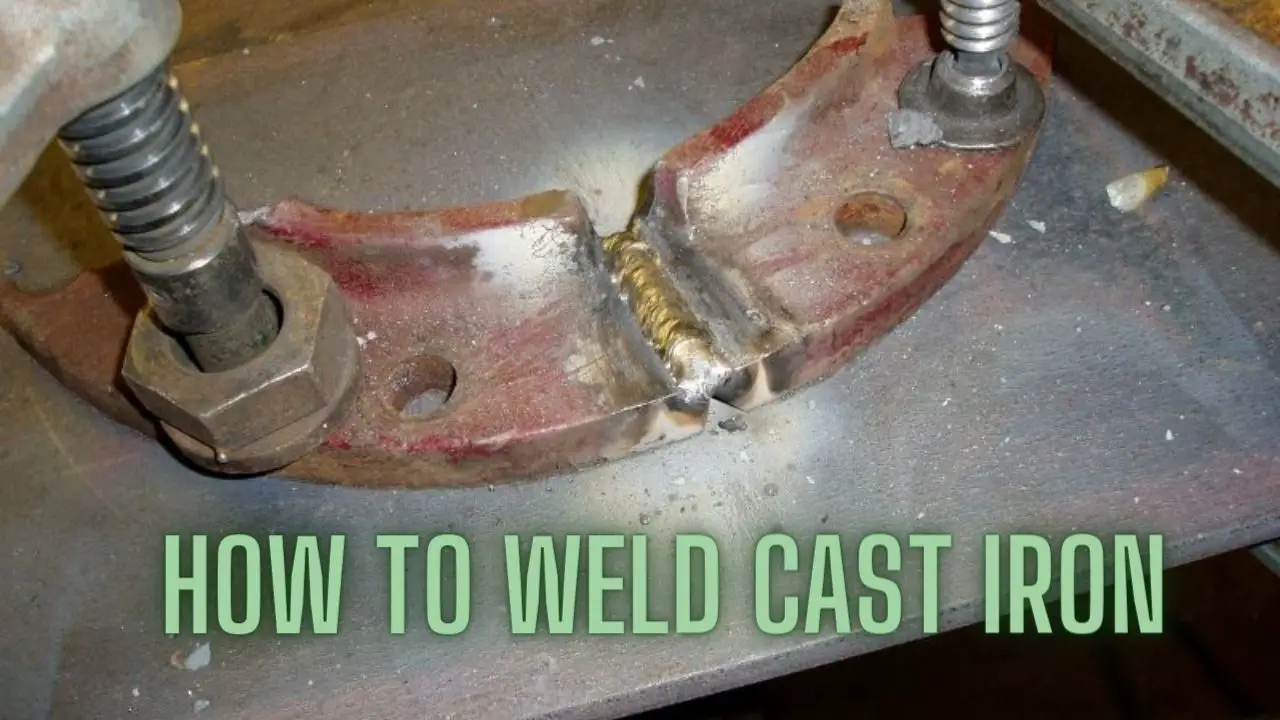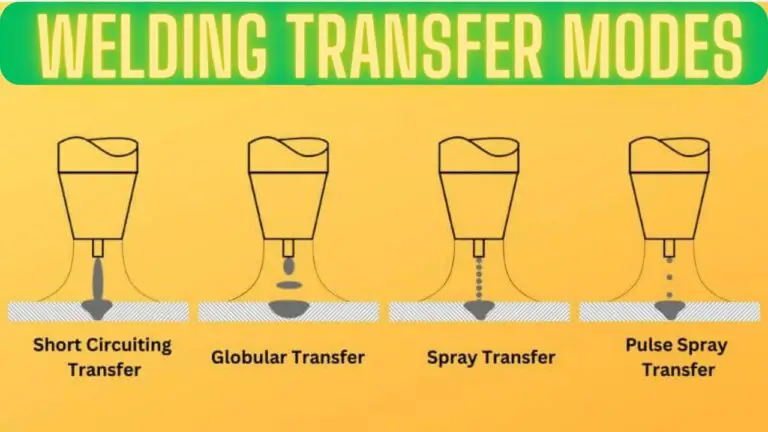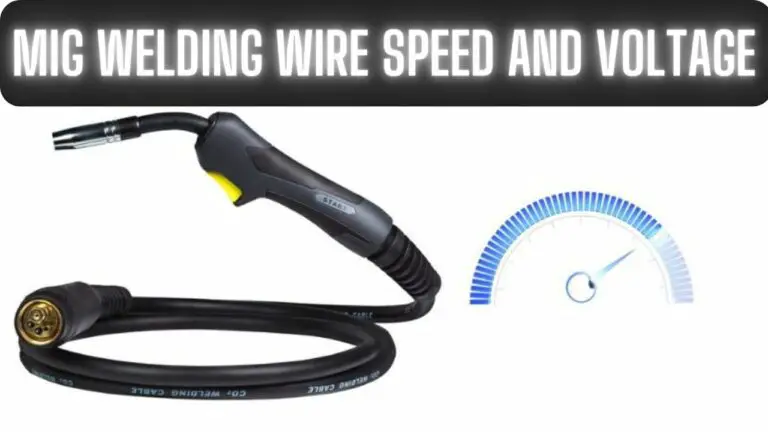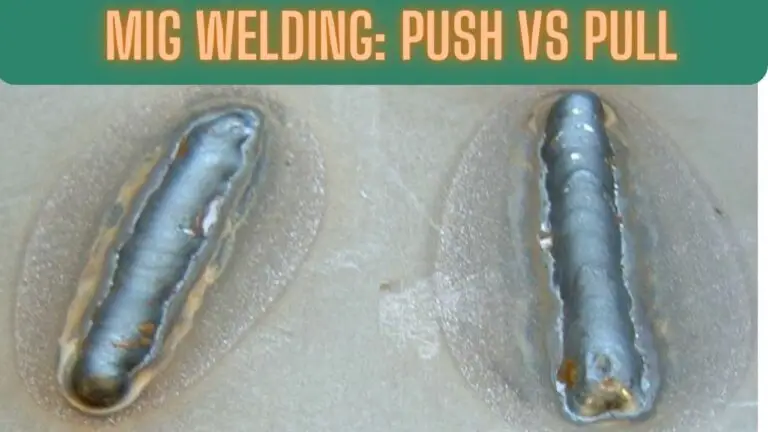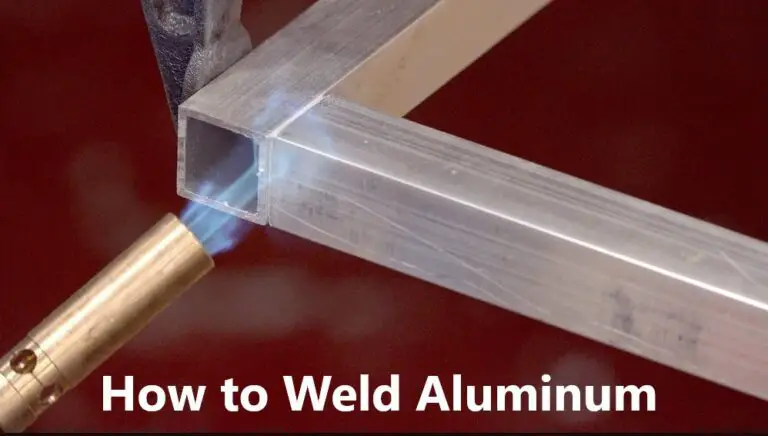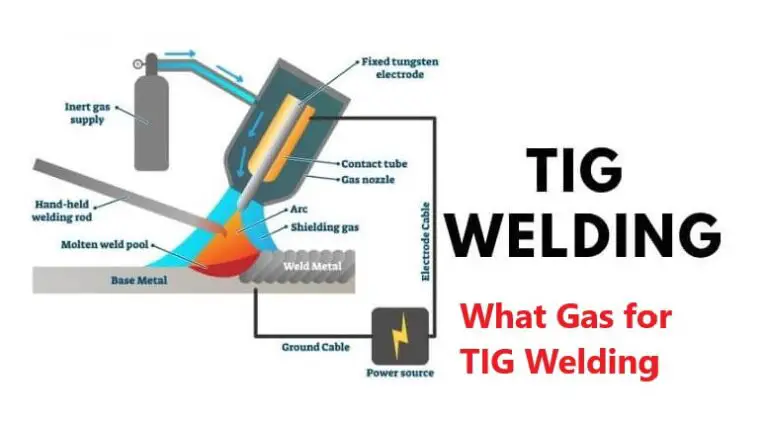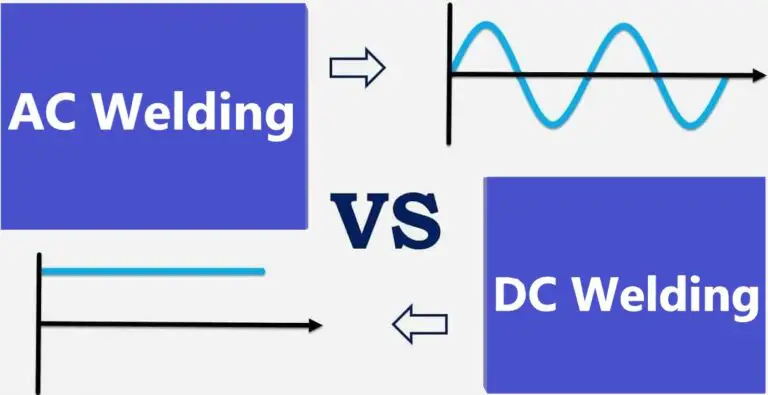How to Weld Cast Iron: Applications Of Cast Iron
Introduction
Welding cast iron is a specialized process that requires careful consideration of the material’s properties and unique challenges. Cast iron, known for its strength and durability, presents difficulties during welding due to its high carbon content and brittleness. However, with the right techniques and precautions, it is possible to achieve strong and reliable welds on cast iron components.
In this guide, we will delve into the intricacies of welding cast iron, providing insights into the preparation, welding methods, filler metal selection, and post-welding procedures necessary for success. Whether you’re repairing a cracked engine block, restoring vintage machinery, or fabricating new cast iron components, understanding the principles of welding cast iron is essential for achieving quality results.
Throughout this guide, we will explore the various challenges associated with welding cast iron and offer practical tips, techniques, and best practices to help you navigate the welding process effectively. By mastering the art of welding cast iron, you’ll be equipped to tackle a wide range of welding projects with confidence and precision. Let’s dive into the world of welding cast iron and unlock the secrets to successful welds on this versatile and resilient material.
Understanding Cast Iron:
Cast iron is a ferrous alloy known for its high carbon content and excellent casting properties. It is widely used in various industries for its strength, durability, and heat resistance. Understanding the characteristics of cast iron is essential for successful welding. Here are key aspects to consider:
- Composition: Cast iron is primarily composed of iron, carbon, and silicon, along with small amounts of other alloying elements such as manganese, sulfur, and phosphorus. The high carbon content distinguishes cast iron from other types of iron alloys, such as steel.
- Types of Cast Iron:
- Gray Cast Iron: The most common type of cast iron, characterized by its gray color and graphite flakes dispersed throughout the matrix. Gray cast iron offers good machinability and damping capacity but is relatively brittle.
- White Cast Iron: Contains carbon in the form of cementite, resulting in a hard and brittle structure. White cast iron is suitable for wear-resistant applications but is challenging to weld due to its brittleness.
- Ductile Cast Iron (Nodular Iron): Contains nodules of graphite within the matrix, providing greater ductility and toughness compared to gray cast iron. Ductile cast iron is more weldable than other types of cast iron but still requires careful welding techniques.
- Malleable Cast Iron: Heat-treated to convert carbon in the form of graphite into carbon in the form of temper carbon, resulting in improved ductility and machinability. Malleable cast iron is easier to weld than other types of cast iron.
- Properties:
- High Carbon Content: Cast iron typically contains carbon content ranging from 2% to 4%, significantly higher than that of steel. The presence of carbon contributes to the material’s hardness and brittleness.
- Brittleness: Cast iron is inherently brittle, meaning it tends to fracture or break rather than deform under stress. This brittleness poses challenges during welding, as it increases the risk of cracking and other weld defects.
- Thermal Conductivity: Cast iron has excellent thermal conductivity, making it suitable for applications involving high temperatures, such as engine blocks, cookware, and machinery components.
- Machinability: Gray cast iron exhibits good machinability due to the presence of graphite flakes, which act as lubricants during machining operations.
- Common Applications: Cast iron is used in a wide range of applications, including:
- Engine blocks and cylinder heads in automotive and marine engines.
- Machine tools, gears, and heavy machinery components.
- Cookware, stoves, and other household appliances.
- Pipes, valves, and fittings for plumbing and water distribution systems.
- Architectural elements such as columns, ornamental fixtures, and decorative castings.
Understanding the composition, types, properties, and applications of cast iron is essential for effectively welding this versatile material. By gaining insight into the unique characteristics of cast iron, welders can implement appropriate welding techniques and precautions to achieve high-quality welds and ensure the integrity of cast iron components.
Preparation Before Welding
Proper preparation is crucial for successful welding of cast iron. The brittle nature and high carbon content of cast iron present unique challenges that require careful attention before starting the welding process. Here are essential steps to take before welding cast iron:
- Safety Precautions:
- Wear appropriate personal protective equipment (PPE), including welding gloves, safety glasses, and a welding helmet with a suitable shade lens to protect against arc radiation and flying sparks.
- Ensure adequate ventilation in the welding area to prevent the buildup of welding fumes and gases, which can be hazardous to health.
- Assessment of the Cast Iron Component:
- Inspect the cast iron component thoroughly for any cracks, defects, or areas of concern that may require repair. Assess the size, location, and severity of defects to determine the appropriate welding technique and approach.
- Cleaning and Preparing the Welding Area:
- Clean the surface of the cast iron component to be welded thoroughly to remove dirt, oil, grease, rust, and other contaminants. Use a wire brush, grinder, or sandblaster to achieve a clean, smooth surface free from impurities.
- Remove any existing weld material, if present, using a grinder or chisel to create a clean and well-defined joint area for welding.
- Preheat the cast iron component uniformly to reduce the risk of thermal shock and cracking during welding. Use a propane torch or oxy-acetylene torch to gradually heat the entire component to the recommended preheating temperature, typically between 500°F and 1200°F (260°C and 649°C), depending on the cast iron grade and thickness.
- Use a temperature-indicating crayon or infrared thermometer to monitor the preheating temperature and ensure uniform heating throughout the component.
- Joint Preparation:
- Select the appropriate joint configuration based on the welding method and the requirements of the application. Common joint configurations for welding cast iron include butt joints, fillet joints, and groove joints.
- Prepare the joint edges by grinding or machining to achieve a clean, precise fit-up with minimal gaps. Bevel the edges of thick cast iron sections to facilitate better weld penetration and fusion.
- Use backstep welding techniques or tack welds to secure the joint and prevent distortion or misalignment during welding.
- Preheating and Post-Weld Heat Treatment Considerations:
- Maintain the preheating temperature during welding to prevent rapid cooling and minimize the risk of cracking. Use ceramic or refractory blankets to insulate the heated cast iron component and retain heat during welding.
- Implement post-weld heat treatment, such as slow cooling in a furnace or the use of heat blankets, to relieve residual stresses and minimize the risk of cracking in the welded area.
By following these preparation steps before welding cast iron, welders can minimize the risk of weld defects, ensure proper fusion and penetration, and achieve high-quality welds with improved integrity and durability. Proper cleaning, preheating, and joint preparation are essential for overcoming the challenges associated with welding cast iron and achieving successful outcomes.
Welding Methods for Cast Iron
Welding cast iron requires careful consideration of the material’s properties and unique challenges, such as brittleness and susceptibility to cracking. Various welding methods can be used to weld cast iron, each with its advantages, limitations, and suitability for specific applications. Here are some common welding methods used for welding cast iron:
- Brazing:
- Description: Brazing involves joining cast iron components using a filler metal with a lower melting point than the base metal. The filler metal is melted and flowed into the joint by capillary action, creating a strong bond when solidified.
- Advantages: Brazing is a versatile and relatively simple welding method suitable for joining cast iron components with dissimilar materials or complex geometries. It produces minimal distortion and does not require preheating of the entire component.
- Limitations: Brazed joints may have lower strength and fatigue resistance compared to fusion-welded joints. Brazing may not be suitable for high-temperature applications or components subjected to heavy loads or dynamic stresses.
- Stick Welding (Shielded Metal Arc Welding – SMAW):
- Description: Stick welding involves the use of a consumable electrode coated with flux to create an arc between the electrode and the workpiece. The flux generates a protective gas shield and forms a slag layer to protect the weld pool from atmospheric contamination.
- Advantages: Stick welding is a widely used welding method for welding cast iron due to its simplicity, versatility, and portability. It can be performed in various positions and environments, making it suitable for on-site repairs and maintenance.
- Limitations: Stick welding requires skill and experience to achieve high-quality welds on cast iron. Proper preheating, electrode selection, and welding technique are essential to minimize the risk of cracking and achieve adequate fusion.
- MIG Welding (Gas Metal Arc Welding – GMAW):
- Description: MIG welding uses a continuous wire electrode fed through a welding gun, along with a shielding gas (typically argon or a mixture of argon and CO2), to create an arc between the electrode and the workpiece. The arc generates heat, melting the base metal and filler wire to form a weld pool.
- Advantages: MIG welding offers high productivity, excellent weld quality, and minimal distortion when welding cast iron. It provides better control over the welding process and can be automated for mass production applications.
- Limitations: MIG welding of cast iron requires careful control of heat input, preheating, and filler metal selection to prevent cracking and achieve proper fusion. It may not be suitable for welding thick cast iron sections or components with complex geometries.
- TIG Welding (Gas Tungsten Arc Welding – GTAW):
- Description: TIG welding uses a non-consumable tungsten electrode, along with a separate filler wire if necessary, to create an arc between the electrode and the workpiece. A shielding gas (typically argon) is used to protect the weld pool from atmospheric contamination.
- Advantages: TIG welding offers precise control over the welding process, excellent weld quality, and minimal distortion when welding cast iron. It is suitable for welding thin cast iron sections, intricate components, and applications requiring high aesthetic standards.
- Limitations: TIG welding requires advanced welding skills and may not be as productive as other welding methods. It is more sensitive to impurities and contamination in the base metal and requires meticulous joint preparation and cleanliness.
- Oxy-Acetylene Welding:
- Description: Oxy-acetylene welding involves the use of a fuel gas mixture of oxygen and acetylene to generate a high-temperature flame for melting the base metal and filler material. The process can be used for fusion welding or brazing of cast iron components.
- Advantages: Oxy-acetylene welding provides excellent heat control and versatility for welding or brazing cast iron components of various thicknesses and geometries. It can be performed in remote locations or areas where electricity is not available.
- Limitations: Oxy-acetylene welding requires skill and experience to achieve proper heat control and fusion when welding cast iron. It may not be as efficient or productive as other welding methods and may produce localized heat-affected zones.
When selecting a welding method for cast iron, it’s essential to consider factors such as material thickness, joint configuration, application requirements, and available equipment and resources. Each welding method has its advantages and limitations, and the choice depends on the specific needs of the welding project and the skill level of the welder. By understanding the characteristics of each welding method and implementing proper techniques and precautions, welders can achieve strong and reliable welds on cast iron components.
Choosing the Right Filler Metal
Selecting the appropriate filler metal is crucial for achieving strong and durable welds when welding cast iron. The filler metal acts as a bridge between the base metal and helps fill the joint, providing strength and integrity to the weld. Here are considerations for choosing the right filler metal for welding cast iron:
- Matching Filler Metal Composition:
- Choose a filler metal with a composition that closely matches the base metal to ensure compatibility and minimize the formation of brittle phases in the weld zone.
- For gray cast iron, select a filler metal with a similar composition, typically containing high levels of carbon and silicon. Silicon helps promote fluidity and wetting of the molten metal, facilitating better fusion and penetration.
- For ductile cast iron, use filler metals specifically designed for welding nodular or spheroidal graphite cast iron. These filler metals typically contain elements such as nickel, copper, and molybdenum to enhance ductility and toughness.
- Preheating and Post-Weld Heat Treatment Requirements:
- Consider the preheating and post-weld heat treatment requirements when selecting the filler metal. Some filler metals are designed for use with preheated or post-heated cast iron components to minimize the risk of cracking and improve weldability.
- Choose filler metals that offer good crack resistance and ductility, especially for applications involving heavy loads or dynamic stresses. Nickel-based filler metals are commonly used for their excellent crack resistance and mechanical properties.
- Welding Method Compatibility:
- Ensure that the chosen filler metal is compatible with the welding method being used. Different welding processes may require specific types of filler metals or electrode classifications to achieve optimal results.
- For stick welding (SMAW), select stick electrodes specifically designed for welding cast iron, such as those with a high nickel content or specialized flux coatings for improved arc stability and slag removal.
- For MIG welding (GMAW) or TIG welding (GTAW), choose solid wire or filler rod materials that match the base metal composition and offer good weldability and deposition efficiency.
- Joint Design and Thickness:
- Consider the joint design and thickness of the cast iron components when selecting the filler metal. Thicker sections may require filler metals with higher deposition rates and greater penetration capabilities to ensure complete fusion and sound welds.
- Choose filler metals with suitable flux coatings or shielding gases to protect the weld pool from atmospheric contamination and ensure clean, high-quality welds.
- Application Requirements:
- Evaluate the specific requirements of the welding application, such as mechanical properties, corrosion resistance, and aesthetic considerations.
- Select filler metals that meet the performance criteria and standards applicable to the intended use of the welded components, ensuring long-term durability and reliability.
- Manufacturer Recommendations and Specifications:
- Refer to the manufacturer’s recommendations, specifications, and technical data sheets for guidance on selecting the appropriate filler metal for welding cast iron.
- Consult with welding experts, suppliers, or industry professionals for advice and recommendations based on their experience and expertise in welding cast iron.
By carefully considering these factors and selecting the right filler metal for welding cast iron, welders can achieve strong, durable welds with excellent mechanical properties and corrosion resistance. Proper matching of filler metal composition, preheating and post-weld heat treatment requirements, compatibility with the welding method, and adherence to application specifications are essential for successful welding of cast iron components.
Welding Techniques
Welding cast iron requires specialized techniques to overcome its inherent brittleness and susceptibility to cracking. Proper welding techniques are essential for achieving strong, durable welds with minimal distortion and defects. Here are some key welding techniques used for welding cast iron:
- Preheating:
- Preheating the cast iron component helps reduce the temperature gradient between the weld zone and the surrounding material, minimizing the risk of thermal shock and cracking.
- Gradually heat the entire component to the recommended preheating temperature, typically between 500°F and 1200°F (260°C and 649°C), using a propane torch, oxy-acetylene torch, or preheating furnace.
- Maintain the preheating temperature throughout the welding process to ensure uniform heating and minimize the formation of brittle phases in the weld zone.
- Peening:
- Peening involves striking the welded area with a hammer or mechanical peening tool while the weld is still hot to relieve residual stresses and improve weld quality.
- Perform peening immediately after completing each weld pass to help distribute the material and reduce the risk of cracking. Use light, overlapping blows to cover the entire weld area.
- Backstep Welding:
- Backstep welding, also known as backstepping or step welding, involves welding in short segments or steps, starting from the far end of the joint and working back toward the starting point.
- This technique helps control heat input, minimize distortion, and reduce the risk of cracking by allowing the welded area to cool gradually between each weld pass.
- Backstep welding is particularly effective for thick cast iron sections or components with complex geometries, where controlling heat buildup is critical.
- Intermittent Welding:
- Intermittent welding involves welding short sections of the joint at a time, followed by a brief pause to allow the welded area to cool before proceeding to the next section.
- This technique helps prevent excessive heat buildup and reduces the risk of cracking by allowing the cast iron to dissipate heat between weld passes.
- Intermittent welding is suitable for long weld seams or large cast iron components where continuous welding may result in excessive distortion or heat-affected zone (HAZ) enlargement.
- Controlled Deposition Rate:
- Control the deposition rate of filler metal to prevent excessive heat input and minimize the risk of overheating or melting the base metal.
- Adjust the welding parameters, such as current, voltage, travel speed, and wire feed rate, to achieve a stable arc and consistent weld bead size without overheating the cast iron.
- Interpass Temperature Control:
- Monitor and control the interpass temperature, which is the temperature of the base metal between weld passes, to prevent excessive heating and minimize the risk of cracking.
- Allow the welded area to cool to a suitable temperature before starting the next weld pass, ensuring that the interpass temperature does not exceed the recommended limit.
- Post-Weld Heat Treatment:
- Perform post-weld heat treatment, such as slow cooling in a furnace or the use of heat blankets, to relieve residual stresses and minimize the risk of cracking in the welded area.
- Follow the recommended post-weld heat treatment procedures based on the filler metal, base metal thickness, and welding method used.
By employing these welding techniques and practices, welders can mitigate the challenges associated with welding cast iron and achieve high-quality welds with improved integrity and durability. Proper preheating, controlled deposition rate, backstep welding, and post-weld heat treatment are essential for overcoming the brittleness of cast iron and ensuring successful welding outcomes.
Post-Welding Procedures
Post-welding procedures are essential for ensuring the integrity, strength, and longevity of welds on cast iron components. Proper post-welding treatment helps alleviate residual stresses, minimize distortion, and improve the overall quality of the weld. Here are important post-welding procedures to follow after welding cast iron:
- Cooling Down the Welded Component:
- Allow the welded cast iron component to cool down gradually to room temperature in a controlled manner. Avoid rapid cooling, which can induce thermal stresses and increase the risk of cracking.
- If possible, maintain the preheating temperature during the cooling process to minimize thermal gradients and prevent distortion.
- Grinding, Machining, and Finishing the Welded Area:
- Once the welded component has cooled down, inspect the weld for any protrusions, irregularities, or excess weld material.
- Use grinding, machining, or other suitable methods to remove any weld spatter, slag, or surface imperfections from the welded area. Ensure that the weld profile is smooth and consistent with the surrounding base metal.
- Perform any necessary machining or finishing operations to restore the dimensional accuracy and surface finish of the welded component, if required for the application.
- Inspecting the Weld for Quality and Integrity:
- Conduct a visual inspection of the weld to check for defects such as cracks, lack of fusion, porosity, or incomplete penetration. Use suitable inspection tools and techniques, such as dye penetrant testing or magnetic particle inspection, if necessary.
- Verify the dimensions, geometry, and alignment of the welded joint to ensure it meets the specified requirements and tolerances.
- Assess the mechanical properties of the weld, such as strength, ductility, and hardness, through non-destructive or destructive testing methods as applicable.
- Post-Weld Heat Treatment (PWHT):
- Consider performing post-weld heat treatment (PWHT) to relieve residual stresses and improve the mechanical properties of the welded joint. PWHT involves heating the welded component to a specific temperature and holding it for a predetermined time before gradually cooling it down.
- PWHT can help reduce the risk of cracking, improve weld ductility, and enhance the overall integrity of the weld. Consult welding procedure specifications (WPS) or relevant standards for guidance on PWHT requirements and procedures.
- Surface Protection and Corrosion Prevention:
- Apply suitable protective coatings or surface treatments to the welded area to prevent corrosion, oxidation, or other forms of degradation. Use paints, coatings, or inhibitors compatible with cast iron materials and the intended application environment.
- Ensure that the protective coatings or treatments are applied evenly and adhere securely to the surface of the welded component to provide long-term protection against environmental factors.
- Documentation and Record-Keeping:
- Maintain detailed records of the welding process, including welding parameters, preheating and post-weld heat treatment conditions, inspection results, and any corrective actions taken.
- Document any deviations from the welding procedure and record the steps taken to address them. Keep records of welder qualifications, material certifications, and other relevant documentation for traceability and quality assurance purposes.
By following these post-welding procedures meticulously, welders can ensure that welds on cast iron components meet the required quality standards, performance criteria, and durability expectations. Proper cooling, grinding, inspection, post-weld heat treatment, surface protection, and documentation are essential steps in the post-welding process to achieve high-quality welds and maintain the integrity of cast iron weldments over time.
Special Considerations for Welding Cast Iron
Welding cast iron presents unique challenges due to its composition, properties, and susceptibility to cracking. Special considerations must be taken into account to ensure successful welds and maintain the integrity of cast iron components. Here are key factors to consider when welding cast iron:
- Preheating and Interpass Temperature Control:
- Preheating the cast iron component before welding helps reduce thermal stresses, minimize the risk of cracking, and improve weldability.
- Maintain adequate interpass temperatures during multi-pass welding to prevent rapid cooling and thermal shock. Use temperature-indicating devices to monitor and control the preheating and interpass temperatures accurately.
- Low Hydrogen Welding Processes:
- Use low hydrogen welding processes, such as stick welding (SMAW) with low hydrogen electrodes, to minimize the risk of hydrogen-induced cracking (HIC) in the weld metal and heat-affected zone (HAZ).
- Keep welding consumables, equipment, and base metal surfaces clean and dry to prevent contamination and minimize the introduction of hydrogen into the weld zone.
- Peening and Stress Relief:
- Consider employing post-weld mechanical techniques, such as peening or hammering, to relieve residual stresses and improve the distribution of stresses in the welded joint.
- Peening helps promote plastic deformation and redistribution of stress, reducing the likelihood of stress concentration and crack initiation in the weld area.
- Welding Technique and Travel Speed:
- Use appropriate welding techniques, such as stringer beads or weave patterns, to achieve adequate weld penetration, fusion, and deposition.
- Control the welding travel speed to avoid excessive heat input and maintain proper heat balance, especially when welding thin cast iron sections or components with complex geometries.
- Backstep Welding and Peening:
- Employ backstep welding techniques, starting from the center and working outward, to minimize distortion, control heat input, and promote uniform cooling.
- Consider peening the weld bead immediately after welding to induce compressive stresses and enhance the mechanical properties of the weld.
- Filler Metal Selection and Compatibility:
- Choose filler metals specifically designed for welding cast iron, such as nickel-based or nickel-iron alloys, to ensure compatibility with the base metal and minimize the formation of brittle phases.
- Verify the chemical composition, mechanical properties, and weldability of the filler metal to ensure it meets the requirements of the welding application and applicable standards.
- Post-Weld Heat Treatment (PWHT):
- Consider performing post-weld heat treatment (PWHT) to relieve residual stresses, improve ductility, and enhance the mechanical properties of the welded joint.
- Follow established PWHT procedures and temperature-time profiles to achieve the desired metallurgical transformation and stress relief without compromising the integrity of the weld.
By addressing these special considerations and implementing appropriate welding techniques, procedures, and precautions, welders can overcome the challenges associated with welding cast iron and achieve strong, durable welds with excellent mechanical properties and integrity. Proper preheating, low hydrogen welding processes, stress relief, filler metal selection, and post-weld heat treatment are essential factors in ensuring successful welding of cast iron components for various industrial applications.
Safety and Best Practices for Welding Cast Iron
Welding cast iron requires adherence to strict safety protocols and best practices to protect the welder, surrounding environment, and ensure the quality of the weld. Here are essential safety measures and best practices to follow when welding cast iron:
- Personal Protective Equipment (PPE):
- Wear appropriate PPE, including a welding helmet with a suitable shade lens to protect against arc radiation, safety glasses with side shields, welding gloves, flame-resistant clothing, and steel-toed boots.
- Use respiratory protection, such as a powered air-purifying respirator (PAPR) or a NIOSH-approved respirator, to safeguard against welding fumes and airborne contaminants.
- Ventilation and Fume Extraction:
- Ensure adequate ventilation in the welding area to prevent the buildup of welding fumes, gases, and airborne contaminants. Use local exhaust ventilation systems or portable fume extractors to remove welding fumes at the source.
- Position the welding equipment and workpiece in a well-ventilated area, preferably outdoors or in a welding booth equipped with proper ventilation.
- Fire Safety and Hazard Prevention:
- Keep the work area clear of flammable materials, combustible substances, and clutter to minimize the risk of fire hazards and potential accidents.
- Have fire extinguishing equipment, such as fire extinguishers and fire blankets, readily available and know how to use them in case of emergencies.
- Electrical Safety:
- Inspect welding cables, connectors, and electrical components for damage, wear, or fraying before each use. Replace damaged or faulty equipment immediately to prevent electrical hazards.
- Avoid contact with live electrical parts or conductors during welding operations. Disconnect power sources and properly ground the welding equipment to prevent electric shock hazards.
- Handling and Positioning of Workpiece:
- Securely clamp or fixture the cast iron component to prevent movement, distortion, or misalignment during welding. Use appropriate jigs, fixtures, or welding positioners to hold the workpiece in the desired position.
- Ensure adequate support and bracing for large or heavy cast iron components to prevent tipping, tilting, or collapsing during welding.
- Welding Technique and Parameters:
- Follow established welding procedures, parameters, and techniques recommended for welding cast iron. Adjust welding parameters, such as current, voltage, travel speed, and electrode size, to achieve optimal weld quality and penetration.
- Practice proper welding techniques, including maintaining a consistent arc length, electrode angle, and travel speed, to produce sound and uniform welds with good fusion and penetration.
- Emergency Preparedness:
- Familiarize yourself with emergency procedures and protocols for responding to welding-related accidents, injuries, or incidents. Have a designated first aid kit, emergency eyewash station, and emergency contact information readily available.
- Train personnel on emergency response procedures and provide periodic refresher training to ensure readiness and awareness of safety protocols.
By following these safety measures and best practices, welders can minimize risks, ensure compliance with safety regulations, and create a safe working environment for welding cast iron. Prioritizing safety is essential for protecting personnel, equipment, and the surrounding environment while achieving high-quality welds and maintaining productivity in welding operations.
Tips for Successful Cast Iron Welding:
- Maintain proper preheating and post-heating temperatures to prevent cracking.
- Use the correct electrode and welding technique for cast iron.
- Keep the welding area clean and free of contaminants.
- Control the heat input by using shorter weld passes and maintaining a steady pace.
- Practice on scrap cast iron pieces before tackling critical projects.
Applications Of Cast Iron
Cast iron is a versatile material with a long history of use in various applications due to its strength, durability, and excellent castability. Here are some common applications of cast iron:
- Pipes and Plumbing: Cast iron pipes have been used for centuries in plumbing systems. They are known for their durability, resistance to corrosion, and ability to handle high-pressure water and sewage systems.
- Engine Blocks: In the automotive and machinery industries, cast iron engine blocks are widely used due to their excellent thermal conductivity, strength, and ability to withstand high temperatures and pressure.
- Cookware: Cast iron cookware, including skillets, Dutch ovens, and griddles, is highly prized for its even heat distribution and heat retention properties. These items are often passed down through generations.
- Construction: Cast iron is used in the construction industry for various applications, including decorative railings, ornamental gates, and structural components like columns and beams.
- Manhole Covers and Grates: Cast iron’s strength and durability make it an ideal material for manhole covers and drainage grates, providing long-lasting solutions for urban infrastructure.
- Pumps and Valves: Cast iron is commonly used for manufacturing pumps and valves in water treatment plants, industrial facilities, and municipal utilities due to its resistance to corrosion and ability to handle high-pressure fluids.
- Agricultural Equipment: Cast iron components are used in farming equipment such as plows, tillers, and tractor parts due to their robustness and resistance to wear and tear.
- Railroad Industry: Cast iron is used in railroad applications for track components, brake shoes, and couplings due to its durability and ability to withstand heavy loads.
- Architectural Elements: Ornamental cast iron is often used in architectural applications, such as decorative fences, balconies, and exterior detailing on historic buildings.
- Machinery and Industrial Equipment: Cast iron is used in the manufacturing of various industrial equipment, including gears, pulleys, and machine bases, due to its stability, low-cost production, and ability to dampen vibrations.
- Art and Sculpture: Artists use cast iron to create sculptures and art installations due to its versatility and the ability to achieve intricate and detailed designs.
FAQS
Is it possible to weld cast iron?
- Yes, it is possible to weld cast iron. However, it requires specific techniques and materials due to the unique properties of cast iron.
What type of welding process is used for cast iron?
- The most common welding processes for cast iron are shielded metal arc welding (SMAW or stick welding) and gas metal arc welding (GMAW or MIG welding). Oxy-acetylene welding is another option for some cast iron repairs.
Why is welding cast iron challenging?
- Welding cast iron is challenging because it is brittle and prone to cracking. It has a high carbon content, low thermal conductivity, and limited ductility, making it sensitive to rapid temperature changes and stress.
What type of electrode is used for welding cast iron?
- Nickel-based or nickel-iron electrodes are commonly used for welding cast iron. These electrodes have a composition that matches the properties of cast iron and helps reduce the risk of cracking.
Should I preheat cast iron before welding?
- Yes, preheating is essential when welding cast iron. Preheating helps reduce thermal shock and minimizes the risk of cracking. The preheat temperature depends on the cast iron type and thickness and can range from 500°C to 700°C (932°F to 1292°F).
How can I prevent cracks when welding cast iron?
- To prevent cracks, it’s crucial to use proper preheating and post-heating techniques, control the heat input during welding, and employ a backstepping welding technique for long cracks or seams. Ensuring the correct electrode and welding process are used is also essential.
Can I weld different types of cast iron together?
- Welding different types of cast iron together can be challenging, as they may have different compositions and properties. It’s generally recommended to use matching materials or consult with a metallurgist or welding specialist for guidance.
Is there a difference between welding gray cast iron and ductile cast iron?
- Yes, gray cast iron and ductile cast iron have different compositions and properties. Gray cast iron is more brittle, while ductile cast iron is more ductile and less prone to cracking. Welding techniques may vary between the two types.
Can I weld cast iron without special equipment?
- Welding cast iron typically requires specific equipment, such as a stick welder or MIG welder, and the appropriate electrodes. Specialized tools for preheating and post-heating may also be necessary.
Can I learn to weld cast iron on my own, or should I seek professional help?
Welding cast iron requires skill and experience due to its challenges. While it’s possible to learn on your own with proper guidance and practice, seeking help from a professional or experienced welder is often recommended, especially for critical or complex projects.
Conclusion:
Welding cast iron requires careful preparation, the right equipment, and proper technique due to the material’s unique properties. With the correct approach and practice, you can successfully repair cast iron components, extending their lifespan and usability. Always prioritize safety and take the time to learn and master the art of welding cast iron before taking on critical projects.

